Economists at one of Canada’s largest banks, Toronto-Dominion Bank, published a report assessing the impacts of the Canadian government’s “population freeze”, which aims to alleviate pressures on the nation’s economic and social infrastructure.
Last year, the government introduced an immigration plan to right-size non-permanent residents (NPRs) and permanent resident (PR) targets to allow for some “catch up” in the needed infrastructure.
The policy shift has seen a massive reduction in Canada’s population growth from a multi-decade high of 3.2% in Q2-2024 to just 0.9%:
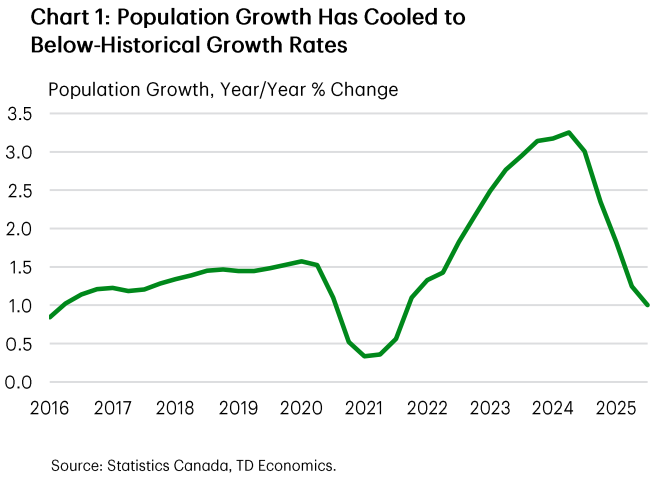
The economists at TD Bank note that the lower population growth policy has had a dramatic impact on the rental market:
“Reduced immigration has moderated demand for purpose-built rentals and, consequently, rent growth”, the economists wrote.
“We estimate rent growth will likely average 2 percentage points (ppts) lower than the counterfactual scenario of maintaining higher population growth”.
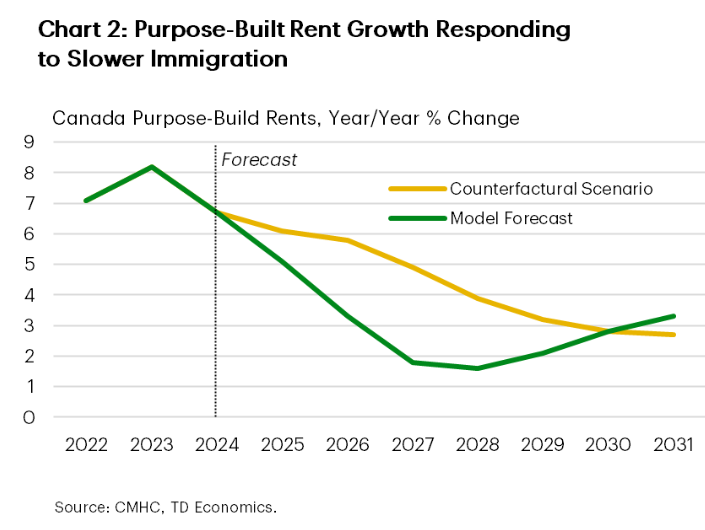
“Condo asking rents are also falling fastest in jurisdictions most exposed to immigration changes”.
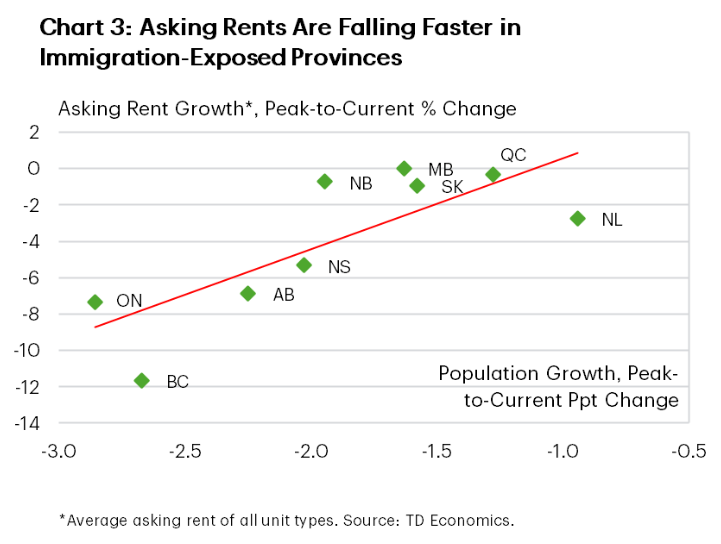
The TD Bank economists also show that NPRs (temporary migrants) are most concentrated in the rental market:
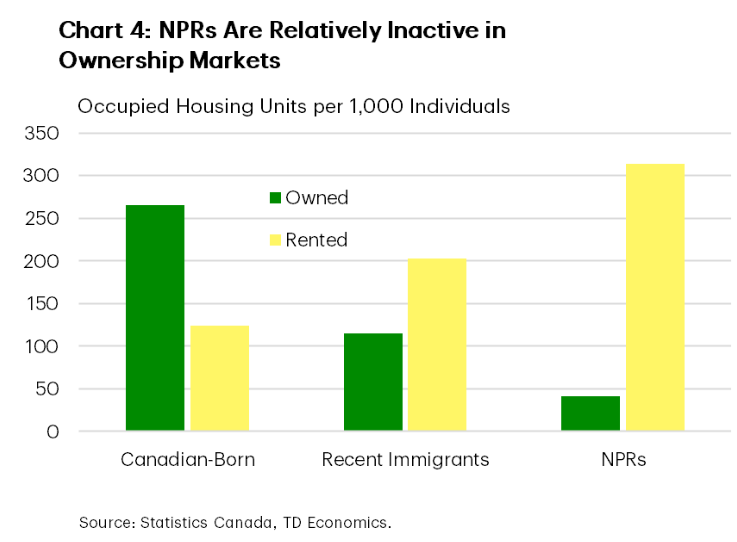
This is important, as the departure of NPRs has driven the reduction in population growth and ergo rents:
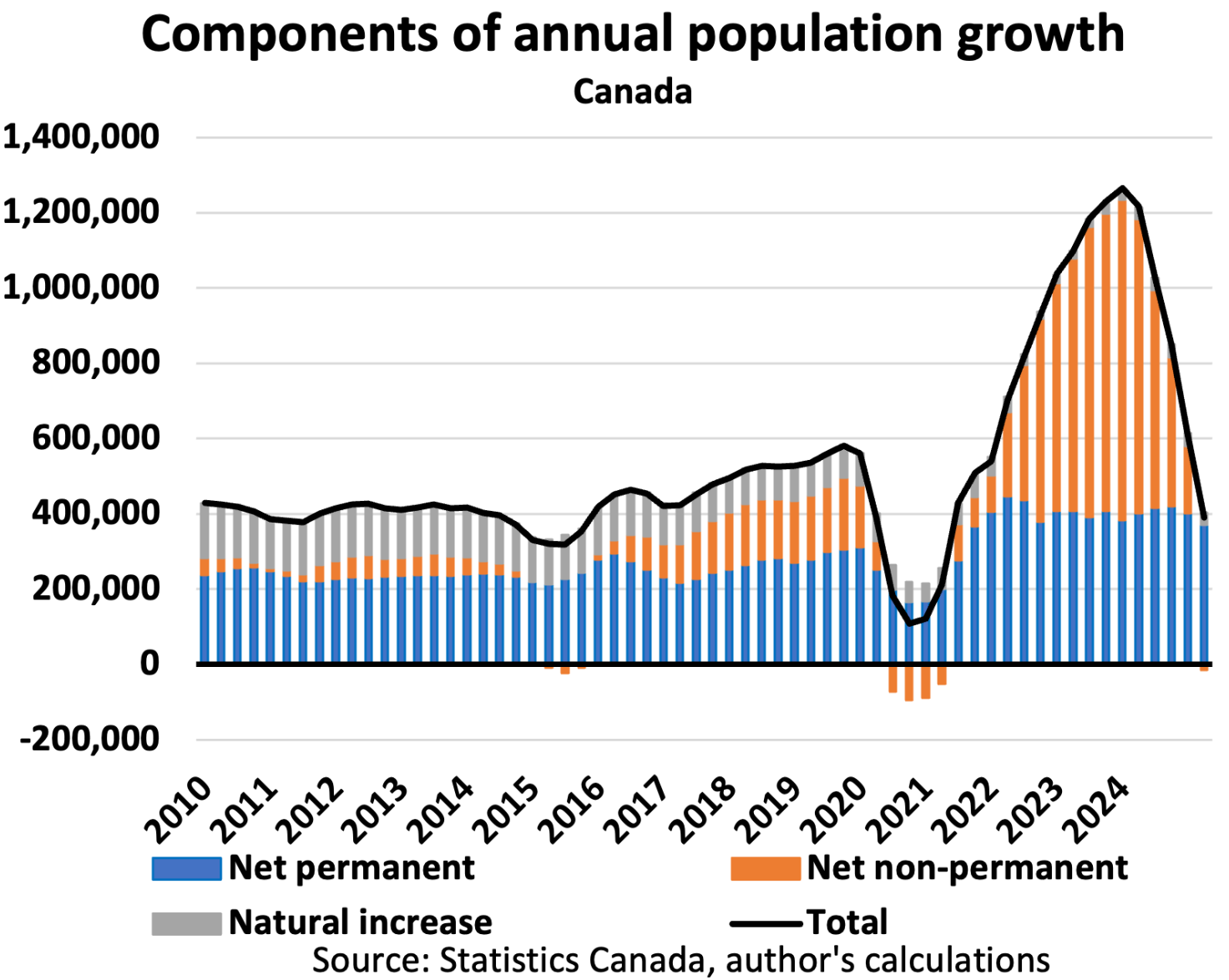
Source: Ben Rabidoux
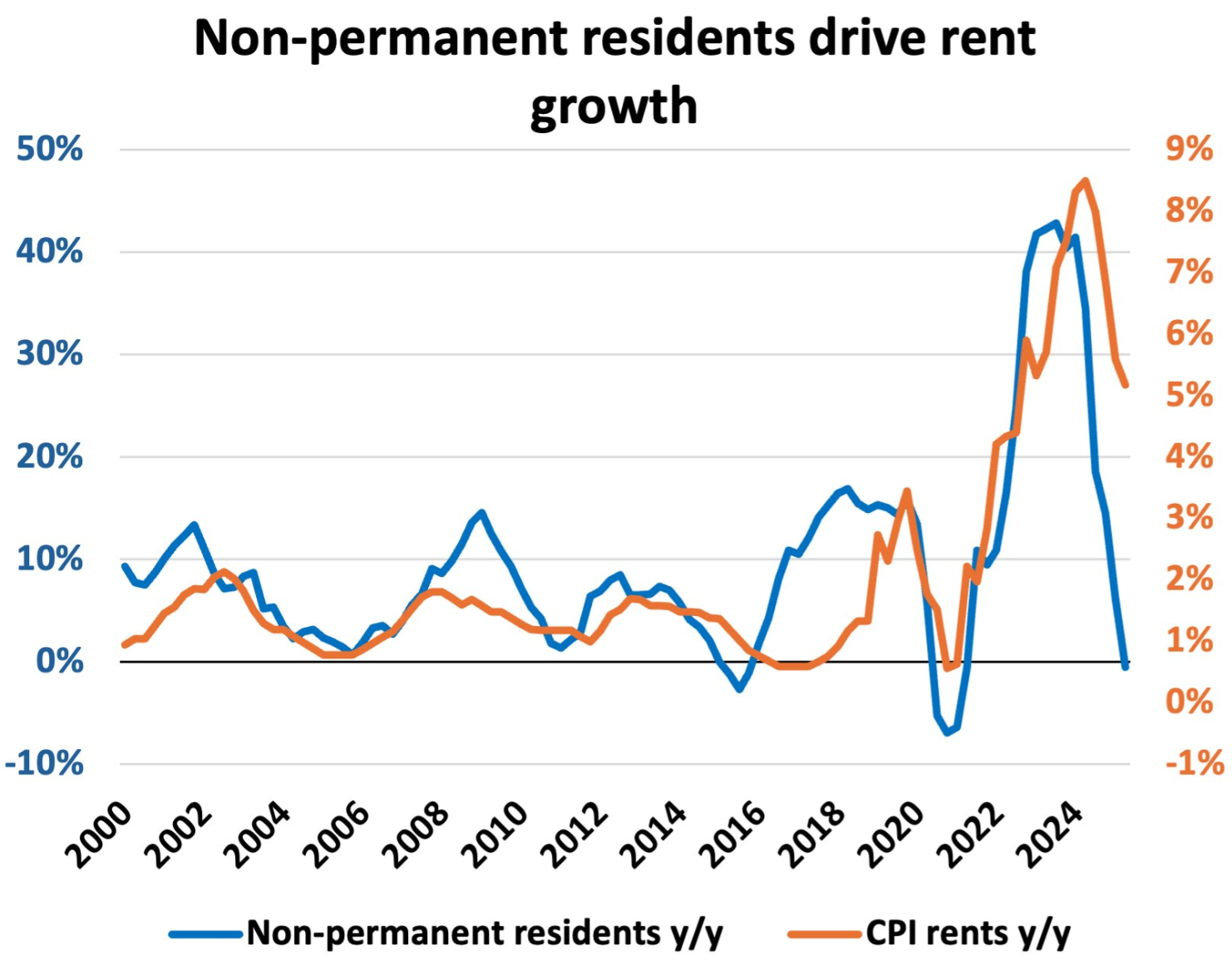
Source: Ben Rabidoux
The TD Bank economists also argue that Canada’s current unemployment rate would likely be at least 1 ppt higher if immigration growth had continued unabated:
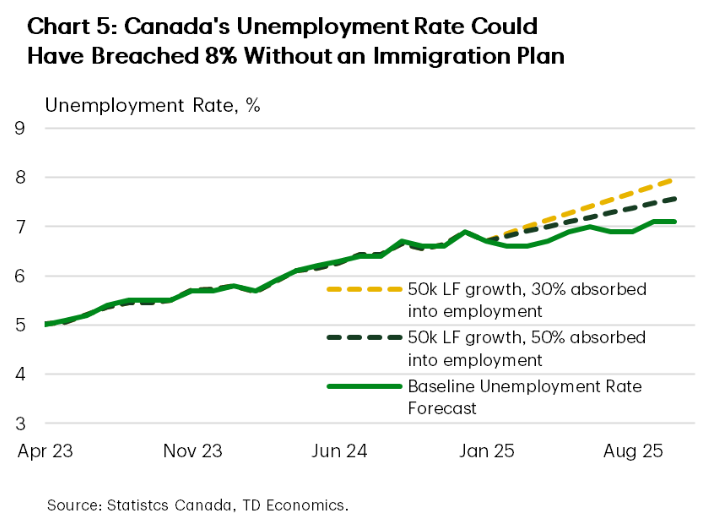
“Re-adjusting immigration targets came at an opportune time”, the economists wrote.
“If the labour growth rates of the prior two years were maintained through 2025, we estimate today’s unemployment rate could have breached 8% (Chart 5). This is with an assumption that employers absorb 30% of the new labour supply, reflecting the recent trend of weakening demand”.
“Even under a more generous assumption that employers absorb 50% of the new labour supply, the national unemployment rate would still have risen to over 7.5%”.
Finally, the TD Bank economists forecast that per capita spending has increased due to the slowdown in immigration, which has resulted in fewer low-paid, low-spending NPRs (temporary migrants) in the economy.
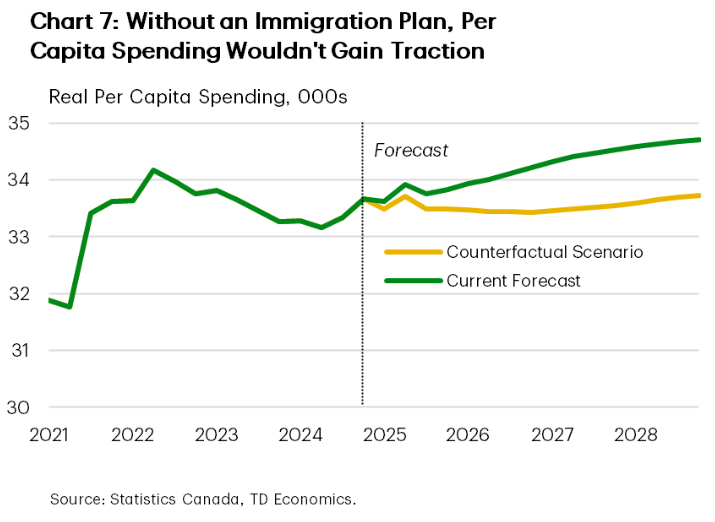
Overall, the TD Bank economists give their tick of approval to Canada’s immigration cuts.
“The federal government’s revised immigration policy is beginning to pay dividends in returning balance to a stretched social infrastructure”, the economists wrote.
“It has contributed to easing pressure in the national housing market—particularly in rentals — and has stemmed a harsher run-up in unemployment during a challenging economic period. And, in a twist, the real economy has not absorbed a significant negative hit to consumer spending, although it remains early days on this analysis”.
Given that Australia is suffering acute housing and infrastructure pressures, poor productivity growth, and its labour market is being propped up by unsustainable government spending and non-market jobs, Australian policymakers should emulate Canada’s immigration cuts.
Sadly, the Albanese government has chosen the opposite approach by raising the effective permanent migrant intake to an all-time high and increasing the international student planning level for 2026.
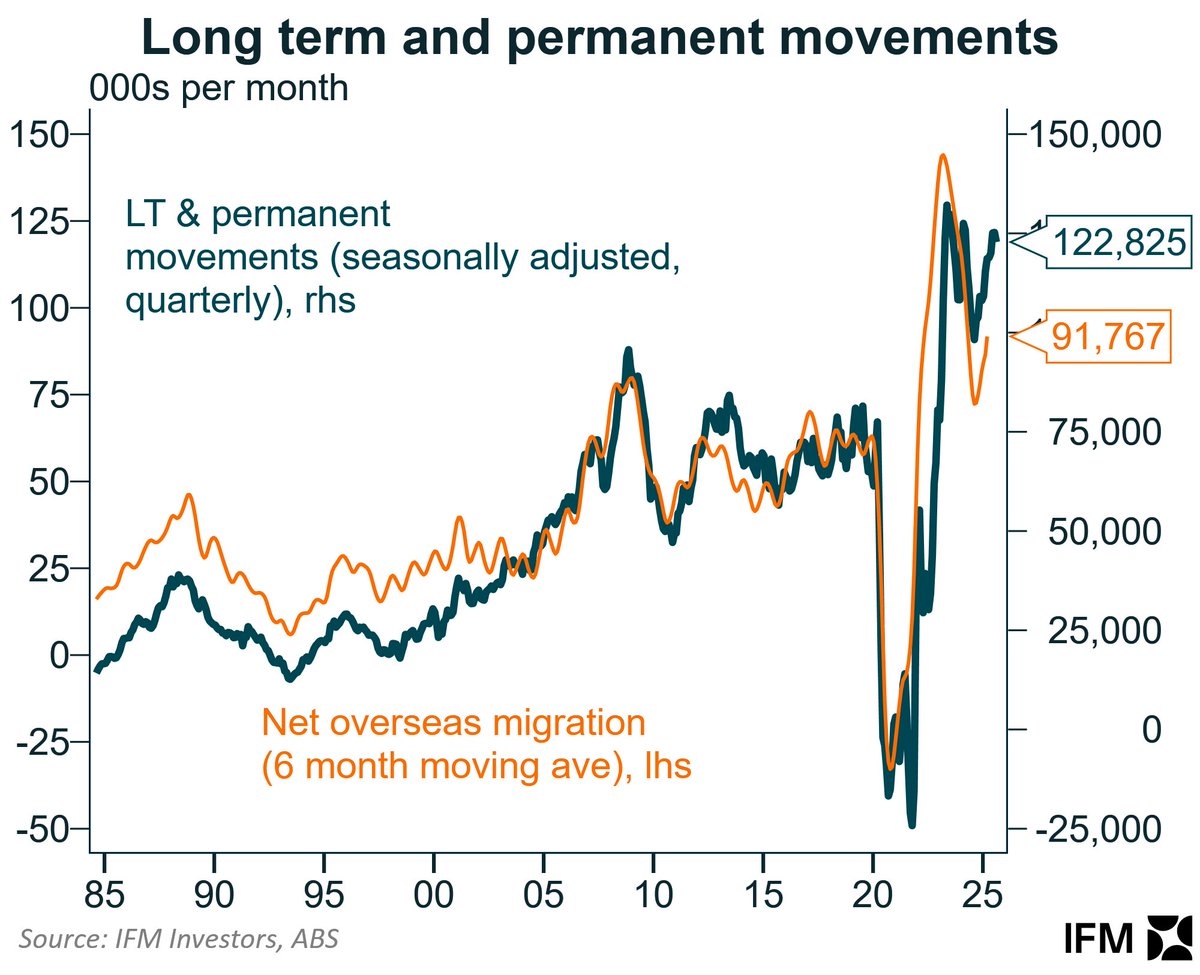
As a result, Australia’s immigration intake will remain at historically high levels and the rental crisis will inevitably worsen.

